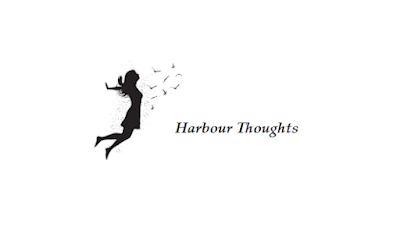Satisfied
By Emily Dickinson
One blessing had I, than the rest
So larger to my eyes
That I stopped gauging, satisfied,
For this enchanted size.
It was the limit of my dream,
The focus of my prayer, —
A perfect, paralyzing bliss
Contented as despair.
I knew no more of want or cold,
Phantasms both become,
For this new value in the soul,
Supremest earthly sum.
The heaven below the heaven above
Obscured with ruddier hue.
Life's latitude leant over-full;
The judgment perished, too.
Why joys so scantily disburse,
Why Paradise defer,
Why floods are served to us in bowls, —
I speculate no more.
Poem Analysis:
Emily Dickinson's poem Satisfied explores the paradoxical nature of human contentment, the limits of joy, and the spiritual and emotional impact of fulfillment. Through her characteristic brevity and layered use of metaphor, Dickinson reflects on the transcendent yet disorienting nature of satisfaction, posing questions about its rarity and intensity.
Themes
- Fulfillment and Contentment: The speaker describes an overwhelming blessing that fulfills her so completely it halts her desire for anything else. This state of "satisfaction" is depicted as a rare, almost mystical experience, emphasizing the profound impact of achieving one’s deepest dream or prayer.
- Paradox of Bliss and Despair: Dickinson juxtaposes “perfect, paralyzing bliss” with “despair,” suggesting that fulfillment can bring a sense of stagnation or loss of purpose. This paradox highlights how absolute contentment can disrupt the drive that typically propels human experience.
- Transcendence and Transformation: The poem suggests that true satisfaction transcends mundane needs (“want or cold”), bringing about a profound transformation of the soul. The “supremest earthly sum” implies a spiritual or existential realization that eclipses worldly concerns.
- Human Limitations in Experiencing Joy: The final stanza questions why human experience of joy is so limited and fleeting (“Why joys so scantily disburse”). Dickinson critiques the scarcity of such blissful moments, expressing a resigned acceptance of life’s measured allotments of happiness.
Structure and Form
The poem is written in Dickinson’s typical ballad meter, with alternating lines of iambic tetrameter and iambic trimeter. This familiar structure provides a rhythmic simplicity that contrasts with the complexity of the ideas explored. The rhyme scheme is subtle, with slant rhymes adding a sense of ambiguity and incompleteness, mirroring the poem’s exploration of satisfaction and its limits.
Literary Devices
- Metaphor and Symbolism:
- "Enchanted size": The speaker’s blessing is described as something immeasurable, almost otherworldly, symbolizing the depth and rarity of true contentment.
- "Phantasms": The fleeting and insubstantial nature of unfulfilled desires, which are erased by the arrival of the blessing.
- "Floods served to us in bowls": A powerful metaphor for the limitation of human joy, suggesting that while life offers overwhelming potential for happiness, it is rationed or constrained.
- Juxtaposition: The pairing of "perfect, paralyzing bliss" with "despair" encapsulates the duality of extreme fulfillment, revealing the complexity of human emotions even at their peak.
- Imagery: Dickinson employs vivid and contrasting imagery to convey the profound emotional shifts brought by satisfaction. The “heaven below the heaven above” and the “ruddier hue” evoke a vibrant, almost overwhelming experience of joy that transforms the speaker’s perception of existence.
- Personification: Abstract concepts like "judgment" and "prayer" are given human qualities, emphasizing their active roles in shaping the speaker’s journey toward satisfaction.
- Paradox: The poem’s central paradox lies in the idea that satisfaction, while blissful, also extinguishes desire and judgment, leading to a form of paralysis. This interplay underscores the complexity of human responses to fulfillment.
Interpretation of Key Stanzas
- Stanza 1, The Singular Blessing: The speaker describes a blessing so immense that it dwarfs all others, leading her to stop "gauging" or measuring her happiness. This sets the stage for the poem’s exploration of fulfillment as a profound, all-encompassing experience.
- Stanza 2, Bliss as Despair: The “perfect, paralyzing bliss” reflects a state of contentment so complete it borders on despair. Dickinson suggests that achieving one’s ultimate dream may remove the drive for further aspirations, creating a sense of existential stagnation.
- Stanza 3, Transformation of the Soul: The blessing eradicates basic human needs like “want or cold,” elevating the soul to a new state of being. This “supremest earthly sum” implies that satisfaction offers a transcendent, almost divine experience.
- Stanza 4, The Overabundance of Life: The speaker describes life as “over-full,” with its richness obscuring the usual boundaries of heaven and earth. However, this abundance also leads to a loss of judgment, reflecting the disorienting nature of extreme fulfillment.
- Stanza 5, Acceptance of Limitations: In the final stanza, the speaker resigns herself to the finite nature of joy, abandoning speculation about why happiness is rationed. This shift from questioning to acceptance reflects a deeper understanding of life’s inherent constraints.
Philosophical Undertones
- The Nature of Desire: Dickinson’s exploration of satisfaction touches on the human condition’s reliance on desire as a motivator. By achieving complete contentment, the speaker experiences a loss of purpose, reflecting the paradoxical role of longing in sustaining life.
- Transience of Bliss: The poem suggests that moments of perfect satisfaction are rare and fleeting, raising existential questions about the nature of happiness and its scarcity in human life.
- The Limits of Human Perception: The “bowls” metaphor implies that human beings are incapable of fully experiencing the “floods” of joy life offers. This limitation points to the inherent boundaries of human existence and perception.
Emily Dickinson’s Satisfied is a profound meditation on the paradoxical nature of fulfillment. Through its exploration of contentment’s transformative and disorienting effects, the poem delves into the complexities of human emotion and the limitations of joy. By juxtaposing bliss with despair and abundance with restraint, Dickinson captures the nuanced interplay of longing, achievement, and acceptance, offering a timeless reflection on the human pursuit of happiness.
